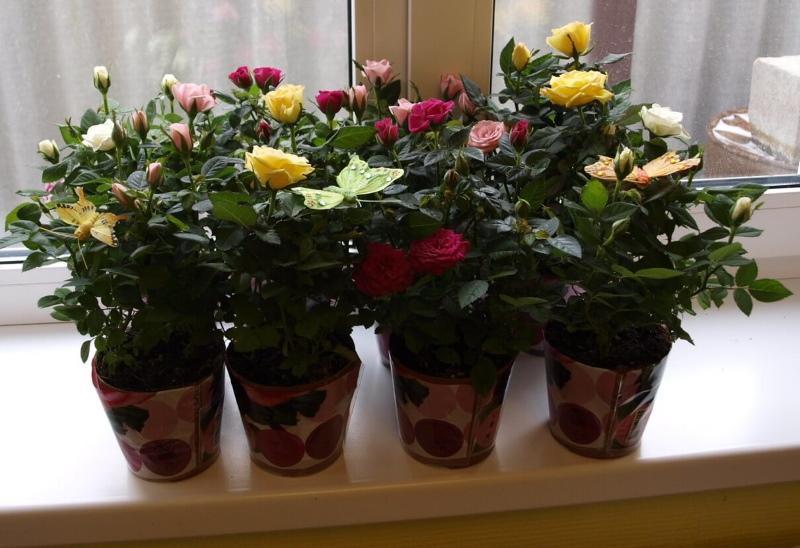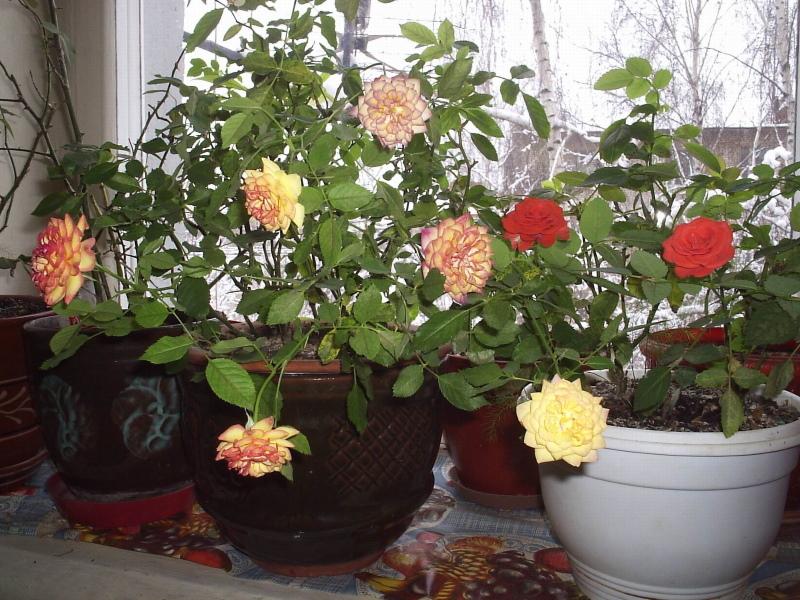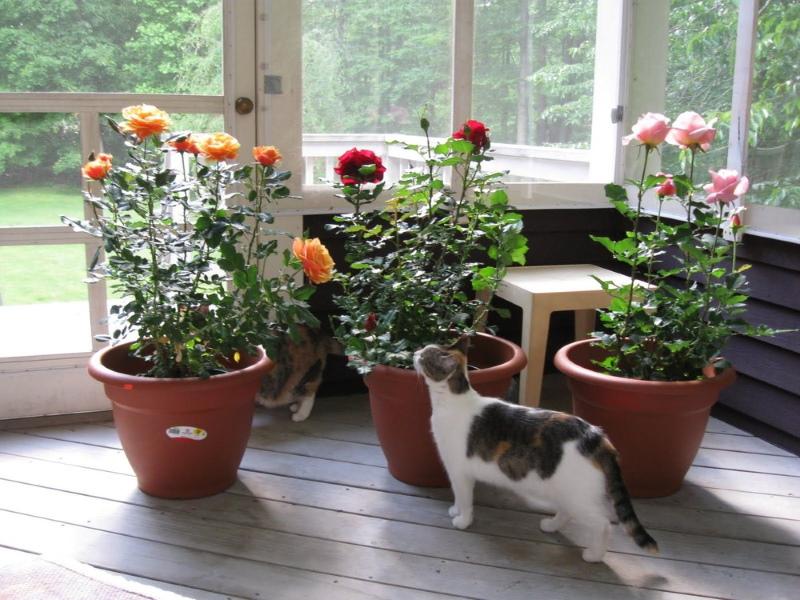Roses in pots - care at home for miniature flower queens
 Miniature copies of their garden relatives, they bloom just as gorgeous, but in the house, and with smaller buds. Roses in pots, home care for indoor varieties scare off some growers. Especially those who nevertheless tried to take a chance and bought a flowering bush. And by the next spring, the rose either disappeared or refused to bloom again. If it was so with you, still do not rush to abandon indoor flower queens forever. Most likely, you simply did not learn the features of home maintenance of potted roses.
Miniature copies of their garden relatives, they bloom just as gorgeous, but in the house, and with smaller buds. Roses in pots, home care for indoor varieties scare off some growers. Especially those who nevertheless tried to take a chance and bought a flowering bush. And by the next spring, the rose either disappeared or refused to bloom again. If it was so with you, still do not rush to abandon indoor flower queens forever. Most likely, you simply did not learn the features of home maintenance of potted roses.
Roses in pots - home care

Prepare a small pot for a rose, preferably ceramic and always light. Do not overheat the roots in the sun.
Soil for potted roses can be bought special, loose and nutritious. Or mix 4 shares of humus and sod land each, adding 1 share of sand to them.
Content requirements
 Indoor roses need good lighting or they won't bloom. South windows are just what you need. But do not forget that in summer the sun shines strongly in them, and the leaves can get burned. Therefore, darken the plants a little by hanging tulle.
Indoor roses need good lighting or they won't bloom. South windows are just what you need. But do not forget that in summer the sun shines strongly in them, and the leaves can get burned. Therefore, darken the plants a little by hanging tulle.
In addition to light, roses need warmth, but in the summer they can be taken out into the garden for fresh air. But the conditions for wintering should be different: always a cool room. At this time, roses enter a dormant period when they rest from flowering and prepare for the next season. In winter, the temperature in the room where the pot is located should not exceed 8 ° C of heat. Otherwise, the plants will not be able to form flower buds.
How to care for indoor roses
 Caring for rose bushes includes the following activities:
Caring for rose bushes includes the following activities:
- Frequent and abundant watering in spring and summer. The soil should not be allowed to dry out, otherwise the rose will throw off the buds. But at the end of autumn, begin to gradually reduce watering and prepare the rose for rest. In winter, water it rarely, just so that the soil does not dry out.
- Periodic spraying. Roses are not very demanding for humidity, but in the heat they will take a shower with gratitude.
- Top dressing in the spring and summer. This is very important, because the bush spends a lot of energy on flowering. The best option is to use liquid mineral complexes for decorative flowering.
- Transplants every 3 years of adult bushes, and annually - young roses.
- Pruning bushes in spring and after the last flowering. The first pruning will help form roses, remove excess shoots. And the second - will lighten the bush so that it does not waste excess food in winter.
Indoor roses are propagated most often by cuttings. Shoots left over from spring trimming can be rooted in water.